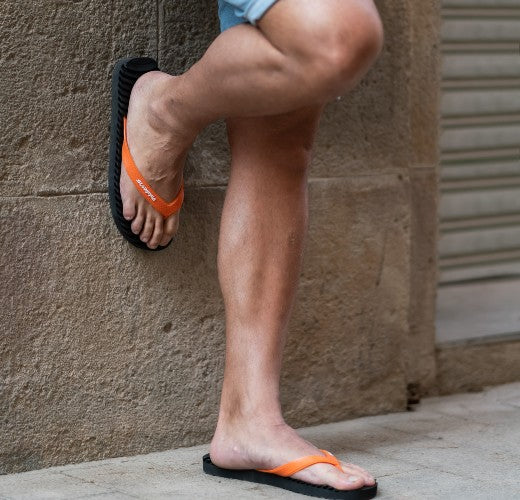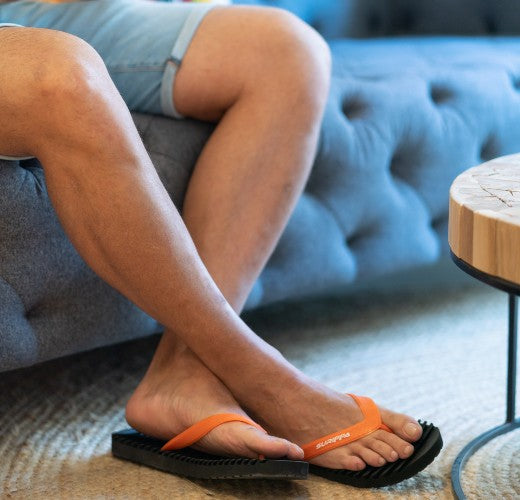Foot care is essential for our health. It's true that many of these treatments can be performed by ourselves, from wearing comfortable shoes to proper foot hygiene and hydration. However, to maintain good foot health, we shouldn't skip an annual visit to a podiatrist . These are professionals who specialize in the care of this area of the body. They are specialists in the prevention, diagnosis, and treatment of pathologies related to our feet and our stride. We mustn't forget that our feet are the extremities that suffer the most throughout the day. We walk and run with them, but they also bear our entire weight. Good foot health is synonymous with a more trouble-free old age.
Reasons to go to the podiatrist
As we mentioned, visiting a podiatrist should be scheduled as an annual checkup. However, in addition to this checkup, you should always visit when you detect certain abnormalities in your feet, such as accidental injuries, any unexplained pain, persistent calluses, unusual nail color, etc.
A podiatrist will also perform a biomechanical analysis of our gait. Why is this important? Because this analysis will show us what our gait is like and how our body behaves when we walk. This simple analysis can prevent the onset of certain muscular and osteoarticular injuries such as tendonitis, plantar fasciitis, or muscle strain.
We must also remember that exercising puts even more strain on this area of the body. Whether we want to start practicing certain sports or already practice them, it's important to visit a podiatrist so they can advise us on the most appropriate footwear for those sports. We also mustn't forget to wear special footwear like Surippa flip-flops , recovery flip-flops after our workout that will provide us with better circulation, improved healing, impact cushioning, and, ultimately, a more rested foot to resume our exercises another day.
When should we go to the podiatrist?
There's no exact answer, because it's always time to go. It's recommended that our children see this specialist even at a very young age.
A first visit to the podiatrist is recommended at 3 or 4 years of age, as long as parents do not detect any unusual gait positions or even frequent falls and stumbles.
During this first visit, the podiatrist will inform parents of normal gait patterns, which is essential for observing the child's first steps.
At this age, the bones of the foot have already formed, so monitoring and examination are extremely important to ensure everything is in order.
Specialists also recommend a visit around 8 or 9 years of age. This is because at this age, children are already beginning to acquire a gait pattern similar to that of adults.
Adolescence should also be monitored by a podiatrist; it is precisely at this time that we experience a hormonal revolution and significant changes in the musculoskeletal system.
In adulthood, it's also a good idea to mark an annual checkup on our calendars, especially if we suffer from conditions like diabetes. In these cases, nerve degeneration can aggravate certain foot injuries. Likewise, if we suffer from any systemic disorder such as rheumatism or osteoarthritis, more frequent follow-up is also advisable.
Main conditions treated by podiatrists
There are numerous pathologies that can affect the foot. However, podiatry experts speak of specific and common conditions. For example, the most common pathologies include bone disorders, musculoskeletal disorders, and dermatological conditions. In other words, calluses, bunions, fungal infections, papillomas, and plantar fasciitis, among others. In these cases, a podiatrist will evaluate the problem, the factors that have influenced the appearance of the condition, and the most effective treatment.
Pes cavus (flat feet) are also very common. In these cases, which are usually detected at an early age, ongoing monitoring is recommended to alleviate and correct symptoms, as well as to prevent poor posture that can aggravate these conditions. In these cases, the use of orthopedic devices such as insoles or specific footwear is considered.
We're sure to know someone who has suffered from what is commonly known as an "ingrown toenail." The truth is, it's common. A problem that results from wearing inappropriate footwear, improper nail trimming, or trauma. These problems should also be treated by a podiatrist.
Finally, among the most frequently asked questions are foot care for people with diabetic foot, as well as sports injuries, which are very common in people who play sports and manifest as joint injuries, inflammation, and other foot and ankle problems.


